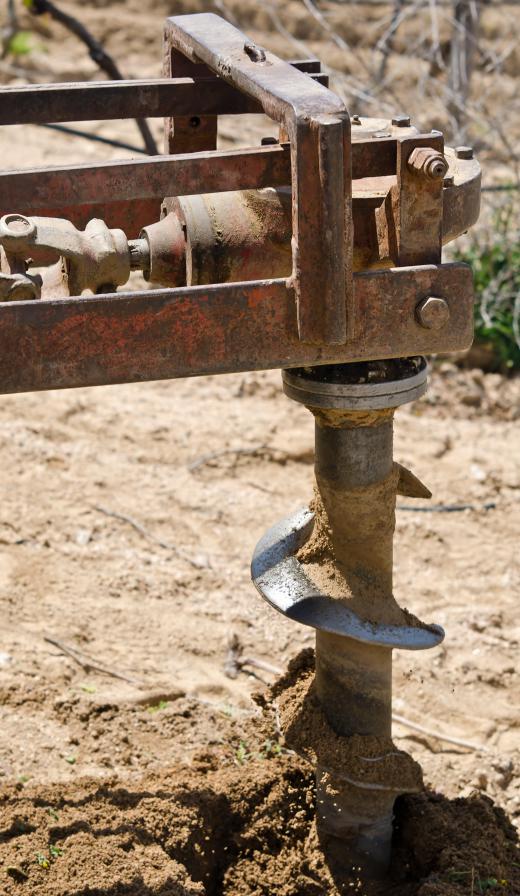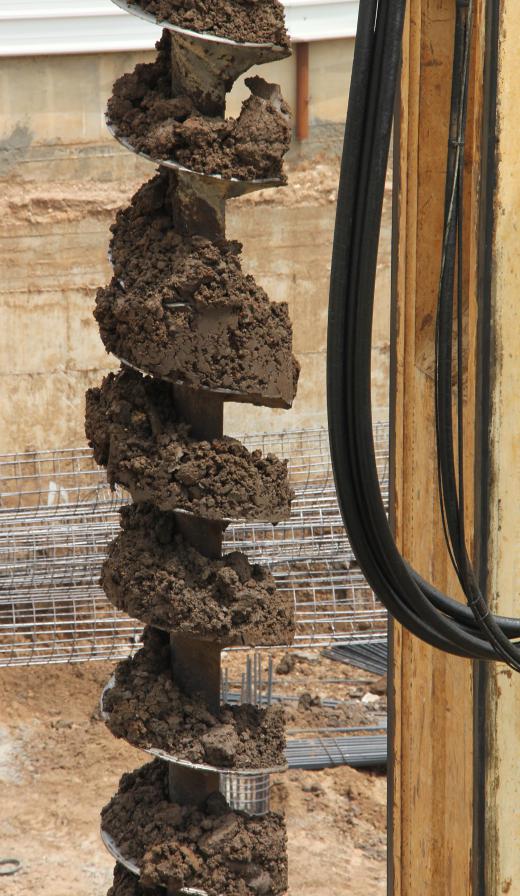A post hole digger is a tool designed to quickly and efficiently dig holes that are small to moderately sized for various landscaping, farming, and other practical applications. Post hole diggers are useful for digging multiple holes, such as for fence posts, and holes where heavy equipment is too big to use and shovels would require excessive work. Though there are a variety of tools, including some augers, that fall under the category of post hole digger, they are either manually or hydraulically driven.
A manually driven post hole digger has two handles that each resemble the handle of a shovel. At the end of each handle is a curved, blade-like head. A person drives the post hole digger into the ground with the blades separated, and then widens the handles, making the opposing heads come together, gathering the dirt for removal to create a hole. A post hole digger is much quicker and more precise than a shovel for someone with skill and strength. A manually driven post hole digger is designed for various landscaping and home uses.

A hydraulic post hole digger is designed for larger applications such as with farming. Though some are freestanding, there are a variety of post hole diggers and augers designed for attaching to equipment. A three-point post hole digger is an example of a hydraulically driven post hole digger or auger that attaches to a tractor.
The sizes and features of a post hole digger will vary greatly depending on their designated use. A bulb planter is the smallest example of a post hole digger. Designed very similarly to manually driven post hole diggers, a bulb planter also functions much the same way and is made to create many small holes quickly for spring and fall bulb planting. The larger, hydraulically driven post hole diggers that attach to equipment also have various features to suit a variety of purposes.

The cost to purchase a post hole digger varies depending on size and functionality and can range from as little as $5.00 US Dollars to several thousand dollars. Post hole diggers are also a tool that can be rented from tool rental and home improvement stores for those who have only a temporary need for one.
